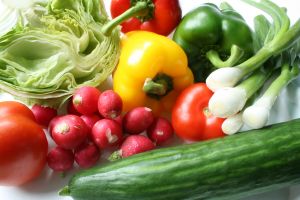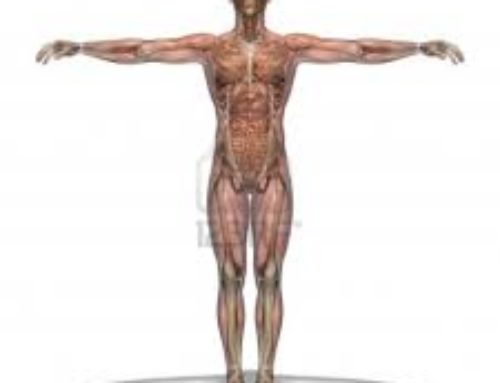
Introduction
Nutritional disorders may be anything from minor to very serious problems.
The result of nutritional disorders can result in the improper functioning of a part of the digestive system. This may be due to an anatomical or physiological peculiarity which a person possesses or it may be due to a disease or degeneration of part of the system.
Signs & Symptoms
1. The hair may become dull and brittle, or it may fall out or change colour.
2. Headaches may be related to vitamin deficiency.
3. Night blindness may arise from lack of vitamin A.
4. The tongue may become inflamed as a result of a number of vitamin deficiencies.
5. Bleeding gums may be a sign of scurvy (vitamin C deficiency).
6. Enlargement of the thyroid gland (goitre) may be linked to iodine deficiency.
7. Rashes, itching, soreness, scaliness and cracking of the skin may be a sign of a number of vitamin deficiencies.
8. Obese people often experience breathing difficulties.
9. Backache may occur as a result of obesity.
10. Too much food, particularly fat and carbohydrates, will lead to obesity. Too little food will cause wasting of the tissues and ultimately starvation. Failure to thrive in children may be a sign of marasmus (too little energy intake) or kwashiorkor (too little protein and energy intake).
11. Heart disease can occur as a result of obesity, and heart failure may be a result of extreme anorexia nervosa as the balance of electrolytes is disturbed.
12. Softening of the bones may be a sign of rickets (lack of vitamin D).
13. Loss of motor function in the legs may be a sign of beriberi (lack of vitamin B1, or thiamine).
14. Lesions in the spinal cord may be a sign of vitamin B12 deficiency.
15. There are a number of conditions affecting the stomach and digestive system as a result of diet. Symptoms may include diarrhoea, nausea, vomiting, pain and cramps.
16. Stones may form in the kidneys as a result of insufficient fluid; obese people may be prone to kidney failure.
17. Adrenal glands may enlarge as a result of pantothenic salt deficiency (related to the B vitamins).
18. The formation of gallstones is associated with a fatty diet.
19. Too much alcohol may cause cirrhosis of the liver.
20. Insufficient iron will cause anaemia.
21. Constipation can be caused by lack of fibre in the diet.
22. Piles (haemorrhoids) may also be a result of lack of fibre.
23. Swelling and painful feet may be a sign of vitamin B12 deficiency.
24. Numbness in the toes may be a sign of vitamin deficiency.
Attacks of gout are connected with overindulgence in rich food and alcohol.
Causes
There are two main types of nutrient/digestive disorders:
Deficiencies: inadequate supply of important vitamins and minerals to conduct the normal bodily processes.
Sensitivities: Some people are sensitive or allergic to certain chemical compounds. Their body simply lacks the ability to deal with those chemicals and reacts badly.
An example is intolerance to lactose, the sugar in milk. 70% of the adult Asian population, 60% of the Latin and around 40 to 60% of the western adult population lack naturally the enzyme lactase, needed for the conversion of lactose in simple sugars.
Consequently they suffer from indigestion symptoms when ingesting dairy products, such as stomach cramps, bloating, sinuses, mucus conditions and generally poor health due to a malfunctioning immune system.
Complications
Vomiting
This is expulsion of stomach contents (and sometimes contents of the duodenum) through the mouth.
Vomiting is commonly and most strongly stimulated by the stomach being irritated or swollen. Other things can stimulate vomiting in some people, can include: nervousness/psychological upsets, dizziness and certain drugs or toxins (particularly if ingested). Nausea and vomiting can also be the result of hormonal changes and imbalances, such as morning sickness in pregnant women. Prolonged periods of vomiting can cause serious loss of gastric juices and result in serious disturbances in the balance of fluids & acid/base relations in the body. The loss of fluids can result in dehydration, and the expulsion of partially digested foods leaves a person at risk of nutrient deficiencies and weight loss due to inadequate calorie intake. The oesophagus, which is not anatomically designed to handle the highly acidic fluids of the stomach, can also be affected, suffering mild chemical burns. If a person is vomiting constantly (such as pregnant women with hyperemesis) they should be hospitalised to avoid permanent oesophageal damage, and to receive hydration and nutrition via IV.
PEPTIC ULCER
Peptic ulcers can occur in either the stomach or duodenum and results in the erosion of their linings. It occurs when the stomach produces too much gastric acid, or when the protective mucosal lining of the stomach or duodenum is compromised. It can occur in people who drink excessively, or use large quantities of anti-inflammatory drugs. In many cases it is hereditary and a large number of cases are due to a bacterial infection (Helicobacter pylori). Drugs can be given to inhibit this acid secretion. Prior to the late 1970s the condition was treated by surgery.
JAUNDICE
This is when eyes and skin develop a “yellowish” colouring. It results from a build up of bilirubin in the body. Bilirubin is formed from the breakdown of pigment in red blood cells. Bilirubin is absorbed into the liver from the blood and eventually excreted in bile. There are 3 types of
jaundice:
1. Prehepatic Jaundice -caused by excess of bilirubin.
2. Hepatic Jaundice -caused by liver disease, and liver not working properly.
3. Extrahepatic Jaundice -caused by a blockage of bile, probably either gallstones or cancer.
It is important to seek medical advice if the skin and eyes become yellow, as it could indicate either a liver condition, or a condition affecting the blood or spleen. Jaundice also occurs in newborn babies; however it is easily treatable in most cases. Severe jaundice in a newborn suggests an underlying serious medical condition. Infants are treated by exposure to special ‘bili lights’ which emit high levels of coloured light, which break down the bilirubin.
LACTOSE INTOLERANCE
Occurs when the small intestine fails to produce the enzyme lactase. Bacterial fermentation of undigested lactose results in gas production leading to diarrhoea, bloating and cramps, after consuming dairy products. This can impair digestion and absorption of nutrients from other foods as well, as the intestines are continually irritated. When not recognized it can lead to a host of other nutritional problems such as vitamin and mineral deficiencies, which can in turn provoke immune system deficiency, followed by frequent colds and flu, allergies to other foods, etc.
Alternatives to cow’s milk that are easier to digest are sheep’s and goat’s milk, which are good alternatives for children, and sheep’s and goats milk derivatives such as yogurt and cheese. There are also dietary supplements with lactase, which can be taken with the milk, and low-lactose milk to which lactase has been added in manufacturing. Other problems with milk can be due to another milk protein, casein. In this case avoiding dairy products in the diet is the best solution.
Alternatives include soy milk, rice milk and oat milk. Oat milk is also good for cholesterol and excess oestrogen control, as it has a good fibre content, which traps both.
HAEMORRHOIDS (PILES)
This occurs when veins in the rectum are put under pressure and swell up with blood. In severe cases, there can be blood loss. Bleeding and itching are common signs. The cause is usually constipation putting pressure on the rectal area. Low fibre diets often cause this problem. The solution is dietary changes with the inclusion of more high fibre content foods, such as fresh fruits and vegetables, which will add bulk and moisture to faeces and facilitate its transit.
CIRRHOSIS
Cirrhosis is a severe liver disease. It is generally the result of chronic liver diseases, such as alcoholic or non-alcoholic liver disease. It is characterised by fibrotic scar tissue in the liver and the gradual loss of liver function. It is most commonly seen in people suffering with alcoholism or Hepatitis C and can sometimes be caused by parasites. Symptoms can be jaundice, uncontrolled bleeding and heightened sensitivity to drugs. It is generally non-reversible and must be closely monitored, with many of the monitoring procedures being quite invasive. Alcohol consumption must be stopped, and stopping smoking is also advisable. Liver transplant is required in many cases.
ALLERGIES
A true allergy is an over-reaction of the immune system, causing the formation of antibodies in white blood cells. Food sensitivities or intolerances do not provoke true allergic responses, but they do cause particular symptoms and can be quite severe, especially in children. However, there are some people who suffer from true food allergies, the most common being nut and shellfish allergies. These can be extremely severe, and in recent times children have died from anaphylactic shock after accidentally consuming even tiny quantities of peanut butter. An undetected food intolerance or sensitivity can deplete the body of vitamins and minerals, even if the quantity of food ingested is sufficient. This can affect the functioning of the immune system, leading to chronic or recurrent health problems. Constant colds and flu are a very common indication of a run down immune system, therefore of undetected allergies or sensitivities.
Foods intolerances and sensitivities that are most common include proteins, such as dairy products, eggs, wheat (and other cereals containing gluten), seafood, chocolate, tomatoes, some fruits and some meats. Skin and blood tests are not reliable in diagnosing allergies. The elimination diet is the best method for diagnosis: all foods known to cause reactions are abstained from and gradually reintroduced into the diet one-by-one. Multiple allergies may go undetected. Keeping a diary of foods eaten, subsequent behaviour and reactions can be useful.
CHOLESTEROL/HEART DISEASE
Cholesterol is a fatty, waxy substance that is important in cell membranes, hormones and brain cells and making vitamin D and bile salts. The body is able to make its own cholesterol, so it is not really necessary to eat it. Excess cholesterol is a serious problem, as it builds up in arteries (with other substances) and causes poor blood flow and sites for blood clots to lodge. In response to the deposition of excess lipoproteins containing cholesterol on the artery walls, the walls themselves develop a chronic inflammation which over time results in their hardening. This hardening of the artery walls is known as atherosclerosis. Heart disease arises when the heart does not get a full supply of blood, and when atherosclerosis develops, the ability for blood to flow through the arteries is compromised due partially to the narrowing due to the accumulation of fatty deposits, and also due to the loss of muscular function of the arteries, as the walls are too stiff to allow it. A complete blockage of the arteries near the heart will result in a heart attack.
Heart disease is an umbrella term that is used to describe a number of related but distinct diseases affecting the heart. In relation to dietary cholesterol, and atherosclerosis, the important, heart disease to be aware of is coronary heart disease. This is the direct result of the accumulation of fatty plaques on the artery walls. Cardiovascular disease, which can also be caused by elevated cholesterol levels in the blood, and the other forms of heart disease combine to be the leading cause of death in many Western Countries. A diet high in saturated fats, found in animal fats as well as some vegetable oils (coconut and palm oil), is usually the source of excess cholesterol. Eating oats, legumes and plenty of fruits and vegetables is effective in increasing the removal of cholesterol, as they have natural fibre which traps and carries away excess cholesterol, so ample intakes of these foods is important in addition to reducing the intake of cholesterol-rich foods.
HDL (high density lipoproteins) and LDL (low density lipoproteins) are compounds attached to cholesterol. HDL is considered ‘GOOD’ because it removes cholesterol from the artery walls, returning it to the liver, whereas LDL is considered ‘BAD’ because it deposits cholesterol in cells. Usually, most people with high overall levels of blood cholesterol have high levels of the bad LDL.
Fatty deposits in the arteries (atherosclerosis) and hardening of the arteries (arteriosclerosis) are also involved in heart disease.
BOWEL CANCER
Cancer of the large bowel (colon and rectum) is very common is modern society. In fact, while breast cancer and prostate cancer are the most common cancers for each gender, bowel cancer, which affects both men and women is the most common cancer in Australia, affecting approximately 1:15 people. Although it tends to occur in people over 50 this is not always the case.
It is thought to be caused by the prevailing dietary habits which are high in fats and low in fibre,although the roles of the various factors are not completed understood. There is also a hereditary component. It is possible that diets with a lot of meat may be harmful, as vegetarians tend to have a lower incidence of bowel cancer. However whether high intake of meat is harmful, or vegetarians simply eat more dietary fibre than people who consume large amounts of red meat is not cleat. Thus for colon cancer the best prevention methods is a daily intake of fresh vegetables and fruits, which will supply the crucial fibre, as well as water, minerals and vitamins. Ensuring adequate hydration is also important to avoid constipation.
When detected early, this is a very treatable cancer, however, the symptoms can be embarrassing and unpleasant and people can find it difficult to approach their doctor. Colonoscopy (an endoscope inserted through the anus and used to visually inspect the intestinal linings) is used both for early detection (polyps can be removed during this procedure, stopping them developing into tumours) and for confirmation of diagnosis. In severe cases, sections of the bowel and/or rectum will need to be removed, and the remaining upper section of the intestines is re-routed through the abdomen wall to a new orifice created through the skin of the abdomen. All faeces are then collected into an attached bag. This is called a colostomy.
Treatment Methods
Nutrition Counseling
This will enable the practitioner to determine the root cause of the disorder. The nutritionist will question the patient on his/her eating habits and lifestyle to determine the cause of the disorder
Diet Changes
Once the Nutritionist determines the cause of the symptoms then they prescribe a diet to be followed by the patient.
Lot of the disorders will rectify with dietary changes. If they are not then the patient will have to undergo further investigations.
Alternative Methods
Some disorders which are not cured by the allopathic methods are known to have benefited by alternative therapies.
Some alternative methods could be:
Naturopathy
Acupuncture
Homeopathy
Ayurveda






Leave A Comment